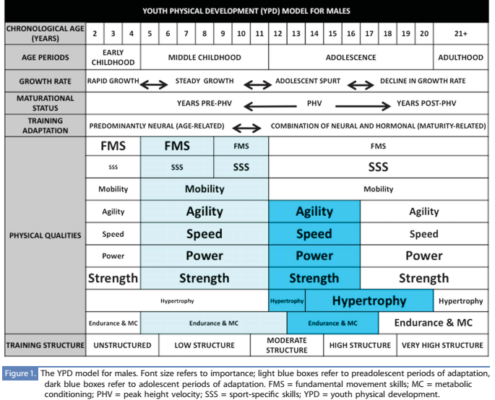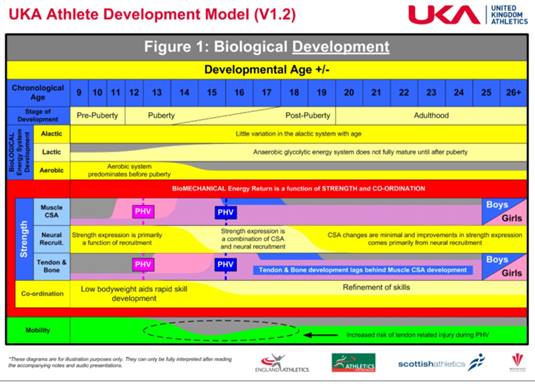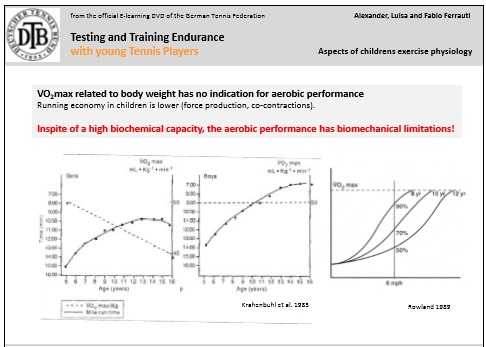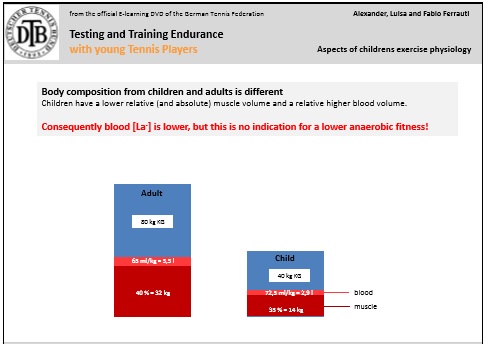FREE Ebook: Endurance training for kids
This blog is one I am really excited to write. I have been really enjoying being part of a Youth Strength & Conditioning forum on Facebook. So in the last few days a couple of questions came in that got me fired up and excited to contribute to the discussion. One question was about sport specific training for children and another was about endurance profiles of children. I thought I would share some of the learnings here and I’ll address the second topic in this post! You can also read more about this topic in my FREE Ebook:
To see the entire APA Stamina Training System download the FREE EBOOK below:
Question:
”Random question…from an adaptation perspective kids are aerobic animals and can play all day quite naturally without much/any training…was just wondering if anyone could shed some light on where this ability (effectively work capacity or aerobic capacity if you will) disappears to as kids get older? Is it simply that their aerobic system has adapted faster than their body size so relative to bodyweight they’re aerobic system is in better shape than it will be when they reach adult weight/height?
Just wondering why most kids can seemingly play all day if given the chance despite no/minimal training yet most adults can’t? I’m sure there is plenty more context (young kids are much less sedentary than adults for example) but interested to hear what literature people have come across…”
I have underlined two statements above which I want to focus on. Let me start by setting the scene.
Long term athlete development
Youth Training is one of my passions. I think practitioners like Rhodri Lloyd have done great work to pave the way for new understandings of the training process and long-term athlete development (LTAD) principles. It’s thought that when working with children certain biomotor abilities such as speed, strength and stamina have ‘windows of opportunity’ wherein they seem to develop at an accelerated rate in response to growth and maturation. However, I’ve never been comfortable calling them ‘windows.’ First of all it implies that the opportunity is only open in a discrete period- ie at any other time the development of these abilities will be less. It also implies that growth and maturation status should be the determining factor for tapping into a specific biomotor- ie. don’t focus on strength and stamina until after peak height velocity (post-puberty).
Figure 1. Lloyd, R. S., & Oliver, J. L. (2012). The youth physical development model: A new approach to long-term athletic development.
The YPD model above highlights that all physical qualities can be worked on all of the time but with a different emphasis. This model was acclaimed for showing that strength should be focused on THROUGHOUT the training journey. As it relates to Endurance and metabolic conditioning, it suggests that Endurance should receive more focus toward mid to late adolescence, in the years post Peak Height Velocity (PHV).
This supports the argument that children respond better to endurance training once they are physically mature.
What does the Research say?
As a headline I would be more inclined to extrapolate the same findings on strength training to endurance training- namely endurance capacities are trainable throughout childhood.
Take a look at the article below:
Muscle fibre type
Are children aerobic animals as the coach points to in his opening question?
I have always been taught to view children as ‘metabolic non-specialists.’ This means that young children are equally happy and adept at running a school cross country event or a 100m sprint race, and show a capability to do both well. They can respond well to training of both the aerobic and anaerobic energy systems at all ages as the research paper above shows. However, once they reach PHV the body will develop the muscle architecture and energy pathways that favour accelerated development of these systems.
So what did the coaches make of this debate?
”I wouldn’t say kids are aerobic animals adolescents and adults will still out perform kids. Kids anaerobic system is yet to develop meaning they rely on type l fibres. Kids show increased aerobic enzyme activity (SDH & ICDH) & decreased anaerobic enzymes (PKF) compared to adults. A result of an under developed anaerobic system means decreased anaerobic byproducts leading to fatigue.”
One of the coaches kicked off the debate by talking about muscle fibre type
”From what I know, it is linked to muscle fibre type, kids can’t develop type 2 fibres, only type 1, so they’re naturally built (in a way) for aerobic activity.”
Another coach adds:
”Their lack of an ‘anaerobic’ system means that they are reliant on predominantly aerobic substrates for energy. As they hit PHV, type II fibers grow and neurogenesis/left and right brain hemisphere cross education brings more of a balance between aerobic and anaerobic contributions to a task. It’s down to muscle type differentiation, so type II fibers exist, but they mimic the characteristics of type I pre PHV and transition with maturity.”
Click on the PDF Link below for some fascinating insights into this topic. This concurs with the observation that children are not fully capable of utilising the recruitment of type II muscles so they mimic the characteristics of type I.
Child Adult differences in muscle activation
This might explain why younger kids hit top speed sooner because their anaerobic systems aren’t as developed, and that’s what impacts their sprint speed over longer distances? They have type II fibres but they are not yet efficient in being recruited maximally.
The UKA Athlete Development Model speaks to the Physiological adaptations in more detail and says that the anaerobic glycolytic system does NOT fully mature until after puberty.
It also says that there is little variation in the ‘alactic’ system with age.
In terms of the Biomechanical factors it shows that the capacity to utilize the energy return is a function of improved strength through firstly coordination (recruitment) followed by cross sectional area.
On this point a coach says, ”Plenty of studies that show kids do adapt to anaerobic training and it isn’t contraindicated at any age….I have no doubt that in years to come science may tell us how these adaptations occur differently in a child vs adult. I think of sports like 400m and boxing that will come with high lactate regardless…but then I also think if kids aren’t very powerful…they won’t be producing much lactate anyway...”
In addition to the discussions on muscle fibre type there were a few interesting discussions on some related topics such as fat mass and role of skill in running economy.
Running economy
Body composition:
Children have less visceral fat and also less muscle.
Role of Skill:
Check out this article below. Despite the above advantage of the older children having larger body composition (and probably more muscle mass) the results indicate that in both females and males, individuals with larger body composition had faster speeds but individuals with smaller body composition and with greater technical skill were as fast as or faster than those with larger body composition regardless of technical skill.
The Relationship between Speed and Technique in Young Speed Skaters
Enzyme Utilization
There is also a reduced ability to produce anaerobic enzymes?
At this point I’d like to get involved in the discussion. I majored in Exercise Physiology as an undergraduate and did my Masters in Exercise physiology so I’m passionate about this. As I have stated before in the previous blog about misunderstanding of principles biomechanics and motor learning, there is also a fair amount of misunderstanding about physiology too!
Aerobic Endurance
All data from personal communication and presentations by Alex Ferrauti, ‘Characteristics of the Endurance Demands of tennis,’ European Coaches Symposium, 2008.’
Biochemical profile: children in comparison to adults
Anaerobic markers • Similar resting values for muscle ATP and PCr • Lower glycolytic enzyme activity (e g PFK) lower adrenergic stimulation • Smaller glycogen stores, less fast‐twitch muscle fibres? • Lower maximal blood lactate concentrations • Better regulation of blood pH and blood [H+] Schwankungen
Aerobic markers • Quicker VO2 response • Higher relative volume of muscle mitochondria and aerobic enzyme activity • Lower RER with better fat utilization
Children ‘seem’ to have lower anaerobic capabilities (in terms of enzyme activity, glycogen stores and blood lactate concentration) and a good capacity for aerobic exercise on the first view of their biochemical profile, but this has no implications for aerobic and anaerobic fitness and endurance training!
Let me explain!!! Research has now shown us that while children have a better aerobic profile than adults in as much as they can attain steady state quicker than adults, the biochemical profile does not correspond to aerobic performance.
The fact remains that older children always outperform younger children on running tests even when matched for VO2max relative to body mass.
VO2max related to body weight has no indication for aerobic performance. Running economy in children is lower (force production, co‐contractions).
In spite of a high biochemical capacity, the aerobic performance has biomechanical limitations!
Anaerobic Endurance
Just as with aerobic exercise, anaerobic capacity is adapted to body composition meaning adults always outperform children in terms of the absolute amount of power that they can produce repeatedly. Evidence to support this inability of children to work anaerobically comes from the research which shows that children produce a lower concentration of Blood Lactate ([BLa]).
However, as the figure depicts below, children have a lower relative and absolute muscle volume and a relatively higher blood volume.
As a result of having less muscle volume and more blood volume children will not produce as much blood lactate. But this is no evidence of a lower anaerobic fitness– if you define anaerobic fitness as ability to repeatedly work at a high intensity within a defined drop off of power. Adults will continue to produce more and more blood lactate as they repeat the same anaerobic work whereas children will only produce so much blood lactate. They have a smaller engine but they produce smaller emissions. They are efficient at being able to reproduce fairly stable levels of power!
But what is interesting is that even with this smaller but stable amount of blood lactate in the blood stream children are still able to regulate their pH at a constant level. This compares to adults where as the [BLa] increases there is a reciprocal decrease in pH. Consequently during repeated sprint activity children will achieve lower absolute power output values in every bout but the drop off in performance will be relatively lower as a percentage and they can maintain a higher overall level of performance!
Training Application
Develop their aerobic system fully or try work on improving what they aren’t as good at naturally (glycolytic)?
According to one coach:
Develop the aerobic adaptations through high intensity aerobic games.
”It would be a bit of waste of their time to develop their lactate system as you wouldn’t see a great deal of adaptations. As others have noted, the FT fibres aren’t recruited as much so they wouldn’t adapt to the stress. I would imagine that hormonal changes after puberty have a massive impact on glycolytic enzyme and LDH production after this longer high intensity work, but in pre-pubescent children, we wouldn’t release anywhere near the amount of hormones to cause significant increases to their ability to utilise the lactate system. This type of work would impact on mitochondrial density, the heart, blood and vascular system… but you’d be better off getting these adaptations from repeated high intensity work with shorter rests (e.g. playing a tag game), or longer duration work at a low intensity.”
I personally wouldn’t say it would be a ‘waste of time’ but I understand the sentiment. I would however agree that playing some high intensity aerobic based games would be well suited to the younger athlete.
To see the entire APA Stamina Training System download the FREE EBOOK below:
Athletic Performance Academy EBOOK Stamina
Remember:
- If you’re not subscribed yet, click here to get free email updates, so we can stay in touch.
- Share this post using the buttons on the top and bottom of the post. As one of this blog’s first readers, I’m not just hoping you’ll tell your friends about it. I’m counting on it.
- Leave a comment, telling me where you’re struggling and how I can help
Since you’re here…
…we have a small favor to ask. APA aim to bring you compelling content from the world of sports science and coaching. We are devoted to making athletes fitter, faster and stronger so they can excel in sport. Please take a moment to share the articles on social media, engage the authors with questions and comments below, and link to articles when appropriate if you have a blog or participate on forums of related topics. — APA TEAM







